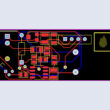Version control is a term which anyone with a computer sciences background will be familiar with. In fact, it is one of the essential aspects which make developers’ lives easier. This is true for both the software and hardware industries, as they are complex in their own ways. Fundamentally, version control refers to a class of systems which manages changes to a project, without removing previous iterations from its history. This aspect is the same for both software and hardware.
However, the way version control works and the various requirements differ distinctly between software and hardware development. These two fields, while stemming from the same parent discipline, have their own respective lingo, requirements, and nuances. They use different tools and systems, to get to what is the same goal, making systems work. Often, the two go hand-in-hand, but their components are quite different.
Version control in the software industry
Optimizing the workflow in the software industry greatly depends on version control. In fact, numerous developers quip that the opposite of version control in software development is utter chaos. After all, when there is a program in the works, many people will be working on it simultaneously. They need access to the documents, files, source code, and various changes to collaborate more easily.
It must be noted that software development requires extensive amounts of source code, which is sensitive to the slightest change. With version control, developers can work on their own copies of the files, so that previous work is not undone in the case of any mistakes. This is ideal for the extensive testing required in software development, and the numerous tweaks which are often needed.
Apart from safe testing, version control also lets software developers try out different versions of a program at the same time, instead of just one. This helps figure out what works best, and then go with it after a satisfactory amount of time.
Therefore, the software industry requires the basic essentials of version control, and work well with it to create projects which succeed.
Version control in the hardware industry
Apart from all the requirements the software industry has for version control, there is a list of factors which are essential for the hardware industry as well. The first and foremost of these is visual differencing.
In hardware and electronics design, the circuit boards and other parts have countless components arranged in a very specific way. Conventional version control, while very useful, does not adequately take this in consideration. Here, visual diffing becomes necessary.
It allows users to see exactly what changes have been made, where, and by whom. This distinguishes version control for hardware from version control for software. In addition, the hardware industry has numerous stakeholders such as suppliers, manufacturers, marketers, and clients. They also need access to these versions so that they can respond accordingly. Sending them various versions of the projects will help them get the complete picture, and also figure out what is needed from them, in order to create the final product.
In conclusion, version control is essential for both the software and hardware industries, albeit with some slight differences.








